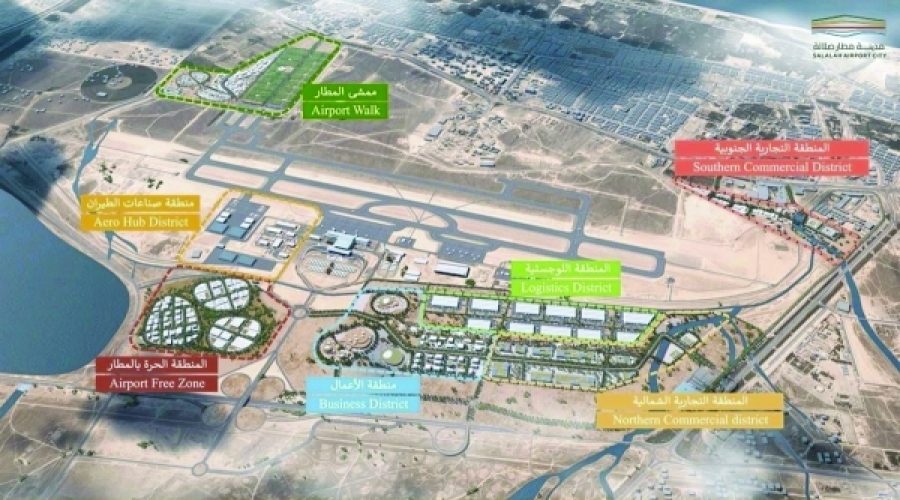Oman’s Airport Cities Aim for $800 Million Investment: What This Means for Business Growth and Opportunities in Oman
MUSCAT: Oman is advancing the development of three Airport Cities at Muscat, Suhar, and Salalah airports, with expected cumulative investments exceeding $800 million by 2030. This initiative aligns with the national vision to transform key air gateways into catalysts for economic growth and urban development.
Salim al Harrasi, Head of Airport Projects at the Civil Aviation Authority (CAA), confirmed that the master plan for these Airport Cities—also known as “aerotropolises”—has been finalized. Muscat Airport City is already under development, while Salalah and Suhar Airport Cities are set to attract significant investments in the coming years.
“Direct investments in Muscat Airport City have already surpassed $80 million and are projected to reach over $500 million by 2030. Collectively, investments across the three Airport Cities are expected to exceed $800 million by 2030,” Al Harrasi said.
He expressed gratitude to strategic partners and notably praised the Oman Airports Infrastructure Projects Team and consulting firms Dar Al Handasah, SSH, F&M Parsons International, ECG, NACO, and Maysan for their dedication in delivering the master plan covering 2018 to 2025.
The development of these aerotropolises aims to reposition Oman’s major airports as dynamic economic hubs rather than merely transit points. By leveraging connectivity, these integrated ecosystems will attract logistics, trade, technology, and service industries, thereby generating considerable non-aeronautical revenue streams.
Muscat Airport City, the largest of the three, features a mixed-use development plan with key zones including: a 200,000 m² logistics portal tailored to air freight and related services; a 1.1 million m² business district housing airline headquarters and aviation offices; an aviation zone of about 166,000 m² encompassing terminal and former cargo areas; and a 192,000 m² hospitality area designated for hotels, duty-free shops, and travel services.
In July, Oman Airports signed a memorandum of understanding with Malaysian developer WCT International Sdn Bhd to explore strategic investments around Muscat International Airport.
Progress is also ongoing at the Muscat Airport Free Zone (MAFZ), managed by Asyad Group under a concession granted by the Public Authority for Special Economic Zones and Free Zones (OPAZ) last year. The free zone aims to draw foreign direct investment, especially in logistics, air freight, general trade, and allied sectors.
Oman Airports recently released a master plan for Salalah Airport City, designed to leverage Dhofar’s geostrategic position, expanding regional air connectivity and its role as a hub for fresh food and agriculture exports. The plan outlines land uses, integrates logistics and tourism sectors, sets infrastructure standards, and encourages public-private partnerships.
A notable feature is a pilot project for direct air-sea cargo transfers between the Port of Salalah and Salalah Airport, utilizing their proximity to enhance cargo handling efficiency and reinforce Oman’s logistics capabilities in the region.
Special Analysis by Omanet | Navigate Oman’s Market
The development of three Airport Cities in Muscat, Suhar, and Salalah represents a strategic shift from traditional transit hubs to dynamic aerotropolises, poised to attract over $800 million in investments by 2030. For businesses, this means new opportunities in logistics, trade, technology, and hospitality, while smart investors should focus on capitalizing on these integrated ecosystems and the emerging free zones to benefit from Oman’s growing regional connectivity and diversified economic landscape. However, companies must also consider the risks of competitive infrastructure demands and the need for strong public-private partnerships to fully realize these ambitious plans.



